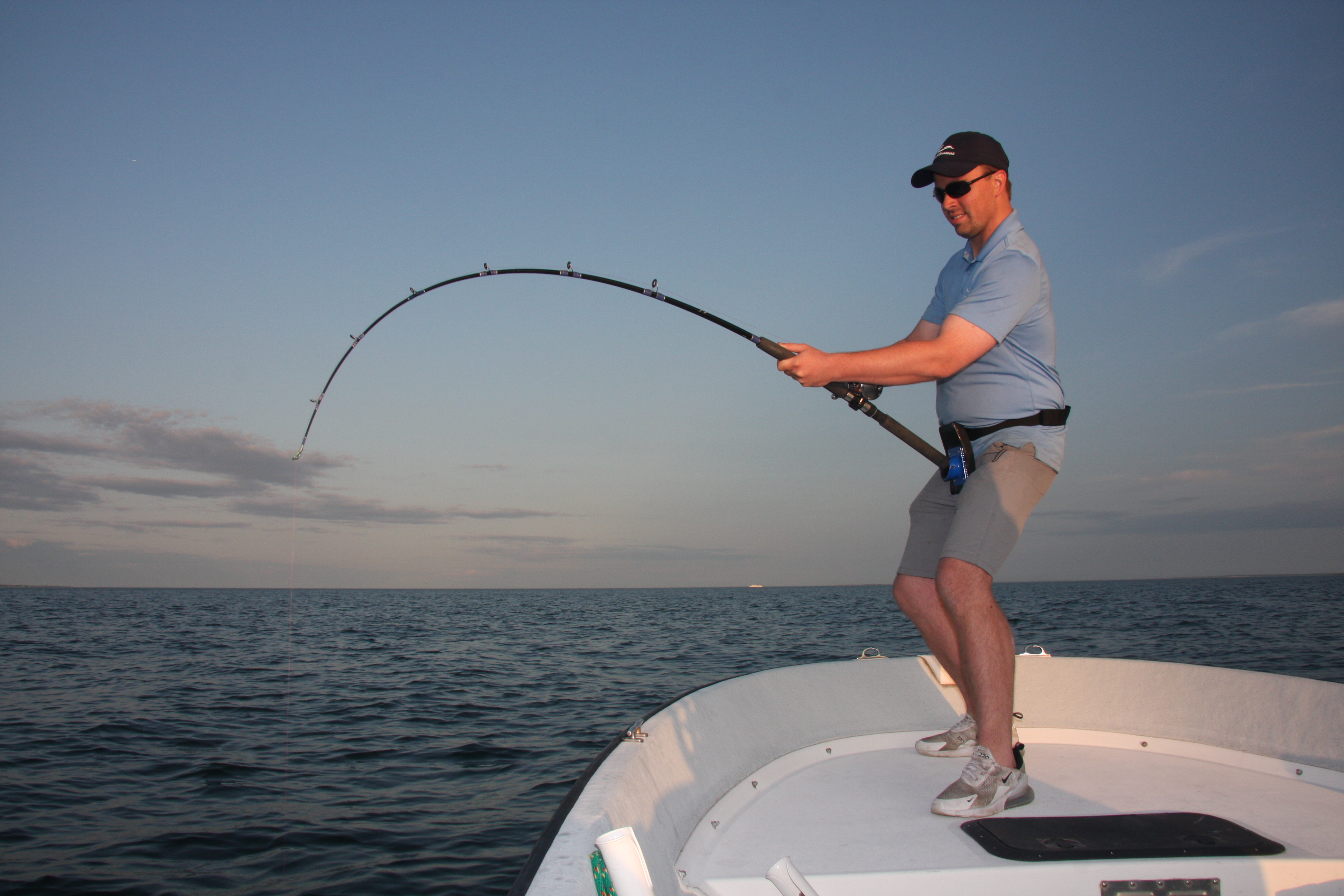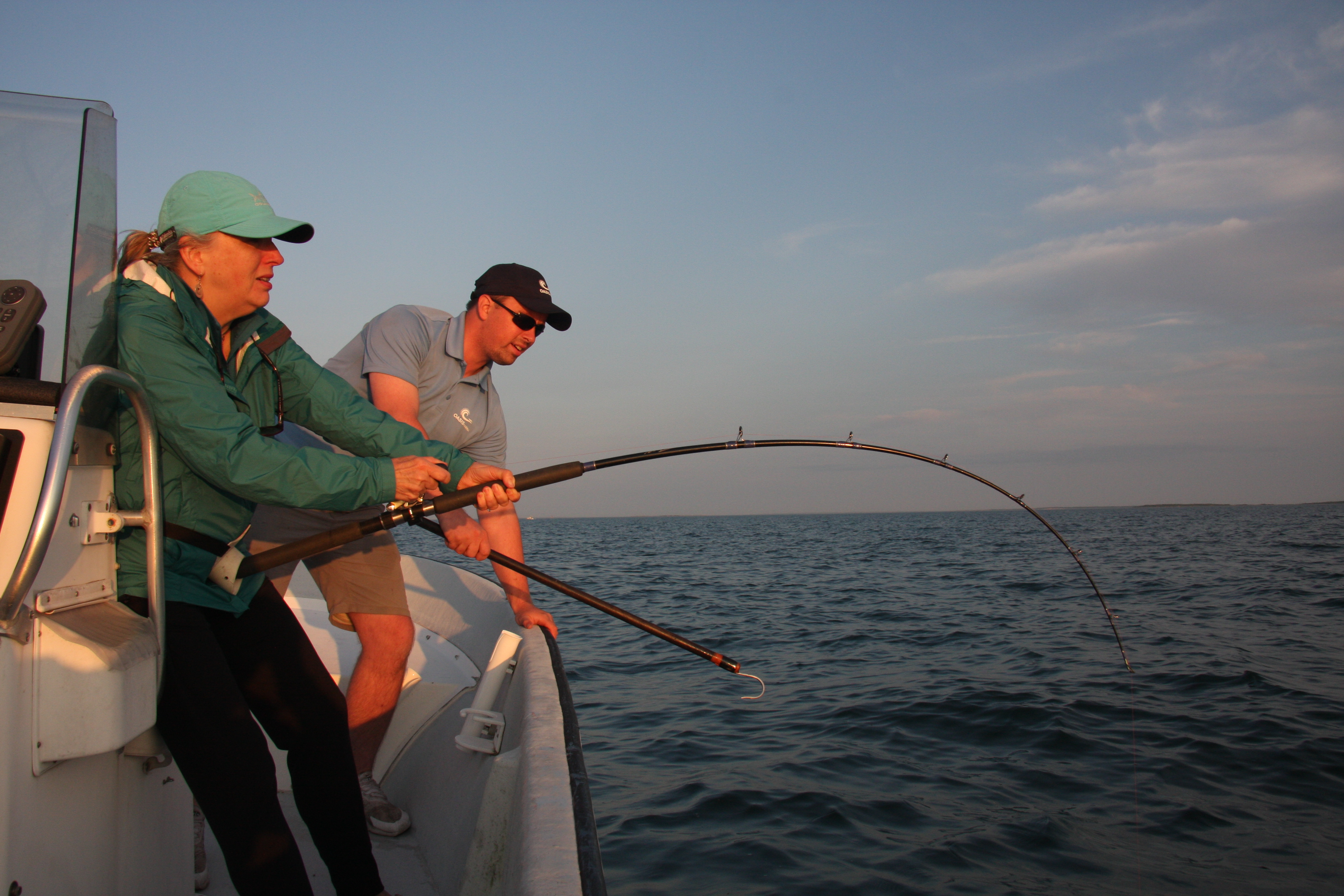The Right Fight
Posted by Capt. Tom Migdalski on 23rd Jun 2023
Light-Duty Belts Take the Fight to the Fish
Experts loosely define a “light-duty” fighting belt as one without a harness and suitable for tackle of less than 80-pound-class and 50-pounds of drag. It may have a gimbal or just a pocket cup—with or without a pin—for the rod butt. Some of today’s “light” belts, however, are capable of handling significant amounts of fighting power and pressure displacement, and pros sometimes match them to extreme tackle such as heavy-duty-pop pelagic spin rods with lures like the Game On! X-Walk Topwater.
An example of a light-duty belt is the AFTCO AFB-3 Alijos, which is a good "day belt" for stand-up tussles with sailfish, dolphin, kingfish, small tuna, yellowtail, cow striped bass, and other similar gamefish. It’s light enough to wear all day on the boat, and it’s also easy to put on or take off at a moment’s notice. Fighting belts such as the Calcutta 15-inch model with removable pin make fighting a fish more comfortable, therefore helping you endure a long battle.
Captain Jack Sprengel of East Coast Charters RI (eastcoastchartersri.com), who has traveled the world pursuing trophy gamefish, says that since the advent of braided line systems and the use of high-tech alloys, fibers, and resins in rod and reel construction, many light-duty belts are now designed for significant lifting. Sprengel targets large pelagic species using heavy spin outfits, high-test braid, and high drag settings, which create extreme loads on fighting belts. “This new standard of gear performance and durability,” he says, “presents some unique considerations when looking for the right belt and can blur the lines of what once defined the difference between ‘heavy’ and ‘light’ duty.”

The Benefits of Belts
Anglers don a belt for a few basic purposes: First, to protect their body from concentrated pressure from a rod butt during a fight. Second, to assist the fight by means of physical or mechanical advantage. By distributing pressure evenly over a wide area, a belt prevents pain or injury and it’s a fulcrum point for the rod, both of which are key components in subduing powerful predators. Last, they particularly assist younger, older, and less strong anglers, even in instances of fighting slammer bluefish on conventional jigging gear when using Game On! EXO Jigs.
“I didn’t have the rod butt digging into the left side of my lower hip,” says Sherry Pensak, age 64, “during an evening of jigging for big blues. Instead of worrying about the hip pain and arm exhaustion, I was able to concentrate on the fight, which was already challenging enough while drifting through the rip.”
A small, lightweight belt should be standard gear in an angler’s boat bag, and is therefore readily handy for sailfish, smaller tuna, dorado, halibut, sharks, monster bluefish, big bass, and any other gamefish when using 12- to 30-pound conventional tackle, medium-weight spinning gear or jigging and popping outfits used for sportfish in the 20- to 80-pound range. Protection from the rod butt while fighting such fish is the primary function of a light fighting belt.

How to Choose a Belt
To select the right light-duty belt, consider three major factors, according to industry experts. First is the physical capabilities of the anglers and crew, second is the nature and size of the target species, and third is the type of tackle you plan to use.
Can the angler and crew handle the combined weight of the gear and the target species? If so, then there are more benefits to using a pocket-type belt with a butt-cap-style rod, which will evenly spread the pressure and allow the angler freedom of rod maneuverability. An experienced angler can make quick, out-of-form rod-tip corrections to track an erratic fish, such as keeping it out of the propeller or off the bow anchor. This freedom of movement can prevent fish loss, boat chaffing, busted lines, and pulled hooks. They are basically a weight-displacing plate that’s quickly adjusted to fit the individual during the fight via a Velcro-style or clip belt.
The other belt style consists of a plate with a proper-size gimbal cup or gimbal pin, depending on the butt of the rod. While this type offers protection, it also stabilizes the rod and reel from rolling or twisting during the fight. The drawback of that style belt is it restricts the range of motion of the rod during the fight, which can limit the angler’s options during a battle with erratic, aggressive species. It provides little physical advantage besides rod stabilization and weight distribution onto the angler’s thighs in a high-stick resting position.
According to Randy Chin, CEO of Temple Reef rods (templereef.com), belts with a fixed gimbal pin were the standard for a long time. “These days,” says Chin, “most light belts either don’t come with gimbal pin or have a removable pin, especially for casting because we use big spinning reels, and the gravity load from the reel negates any torsional movement common with overhead conventional reels, which require a pin to keep the rod straight. Sticking a rod butt into a belt without gimbal pin is much easier and faster. If you’re casting to species like giant trevally or tuna, look for a belt with a deeply-recessed pocket and no pin.”
Qualities of a Good Fighting Belt
Another consideration of a good beltis an ergonomic form that won’t push hard into your abdomen while fighting a fish. The Alutecnos Feather belt, for example, features a comfortable design and uses 6082 aluminum and 316-stainless-steel bolts and screws in its construction. The pad is removable, and its aluminum lasts a lifetime.
Other key features of small fighting belts are rugged construction, light weight, easy and efficient deployment, and adjustability because sometimes they need to be strapped on fast or switched from one person to another in a hurry. And they should be small enough to be easily stowed because you won’t need them in all instances.
When targeting fish more powerful than bluefish or striped bass, avoid fighting belts with small front plates because they are uncomfortable during a long fight, subject to flipping or allowing the rod butt to pop out under vertical load, and offer less overall protection. Look for large plates constructed of aluminum or carbon fiber and cushioned on the back with EVA, gel, or equivalent padding. Buy belts that can remove or install the locking pin to allow for a variety of gear use, which won’t limit your tackle or species options when you travel to your next fishing destination.

